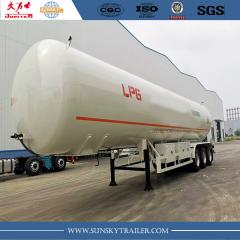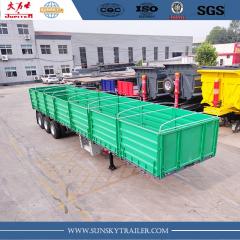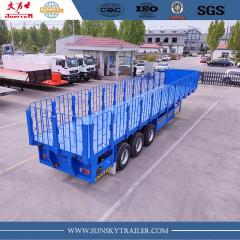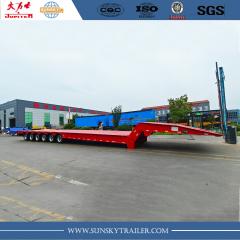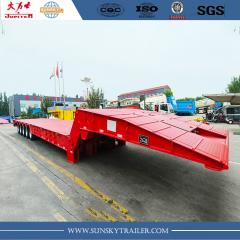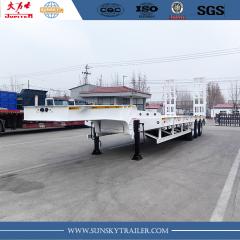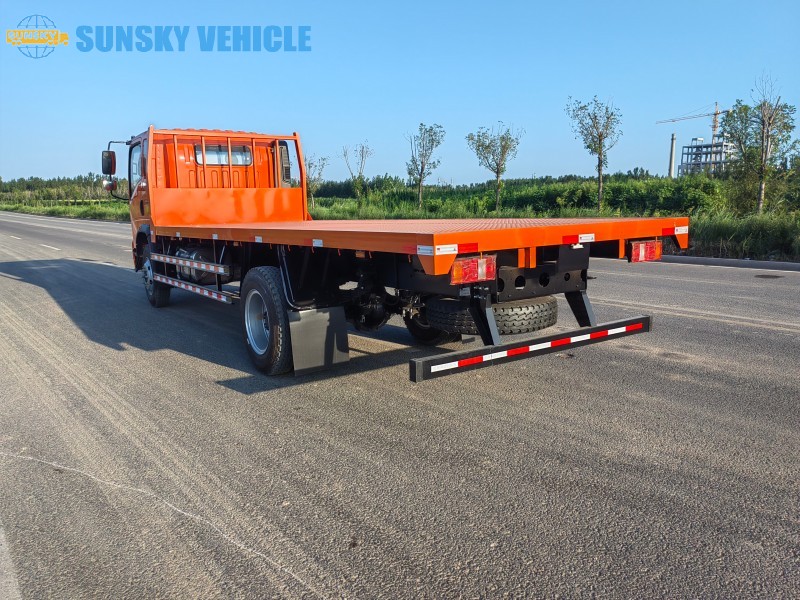- Blog
- What Is a Flatbed Truck? – Complete Guide for Logistics & Transport
- What Is a Dump Trailer? The Complete Guide to Types, Uses, and Choosing the Right Hauler
- Why Are Semi-Trailers Essential in Modern Logistics?
- Why do tires eat?
- What Is A Lowbed Trailer Used For?
- Causes of Semi-Trailer Crashes
Categories
Recent Posts
What Is a Flatbed Truck? – Complete Guide for Logistics & Transport
Definition: What Is a Flatbed Truck?
A flatbed truck is a type of freight vehicle whose cargo area consists of a completely flat deck without fixed sides or a roof. This open design allows for the loading and unloading of oversized, irregular or heavy goods that would not easily fit inside enclosed trailers. According to industry definitions, flatbeds provide easy access from all sides for forklifts, cranes or manual loading.
In logistics, flatbed trucks serve as a key solution for transporting large construction components, steel beams, machinery, and other non-standard loads. Their versatility makes them essential in many supply chains.
Why Flatbed Trucks Are Important in Logistics
Flatbed trucks bridge the gap between standard containerized freight and highly specialized heavy-haul transport. Because they have no fixed walls or roof, they offer flexibility in loading and unloading. They are especially useful when:
-
the cargo is too tall, wide or irregular for enclosed trailers
-
crane or side loading is required
-
rapid loading/unloading is a priority
In many industries—construction, mining, infrastructure—they allow efficient movement of equipment or materials that cannot be palletized or placed inside a conventional dry van. Because of this, flatbed trucks often shorten delivery times, reduce cargo handling and adapt to job-site environments.
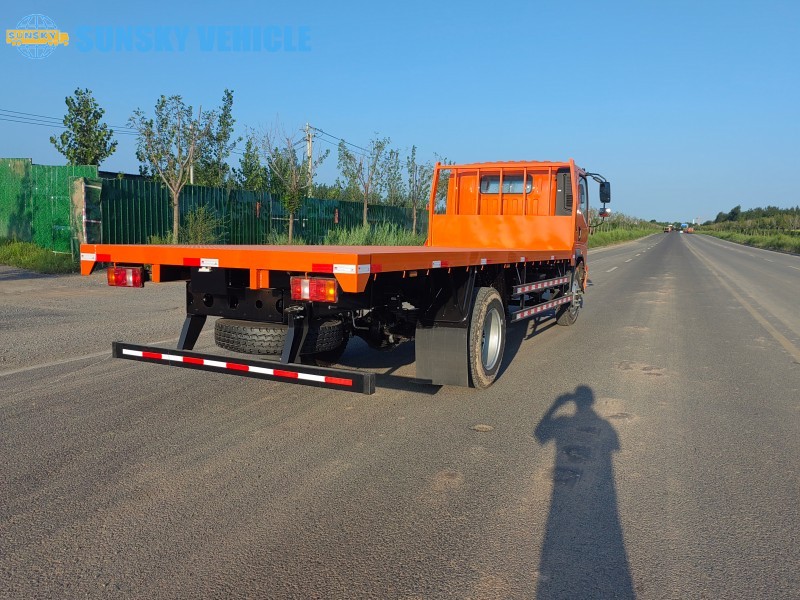
Key Types of Flatbed Trucks and Their Applications
Below are common flatbed variants and how they are applied in the transport industry:
Standard Open Flatbed
This is the traditional flat deck trailer/truck, with no walls and no roof. Suitable for steel, lumber, large crates, and palletized equipment.
Cargo examples: steel beams, prefabricated building modules, and large crates.
Advantages: unlimited load height (within regulation), easy crane or forklift access, and fast loading/unloading.
Drop Deck (Step Deck) Flatbed
This variant features a lowered deck height, often with one drop in height after the gooseneck, allowing taller loads to clear bridges and tunnels.
Cargo examples: tall machinery, oversized crates, and agricultural equipment.
Advantages: accommodates taller freight without requiring special permits, lowers center of gravity, improving stability.
Extendable Flatbed
An extendable version allows extra length for long loads such as piping, poles or structural components.
Cargo examples: long steel sections, wind turbine blades, and utility poles.
Advantages: flexibility in length, optimal for long or continuous cargo items.
Removable Drop-Side Flatbed
Some flatbeds include removable sides or drop sides for partial enclosure or protection during transit.
Cargo examples: palletized goods, modular units needing side loading.
Advantages: combines open-deck flexibility with semi-protection for certain shipments.
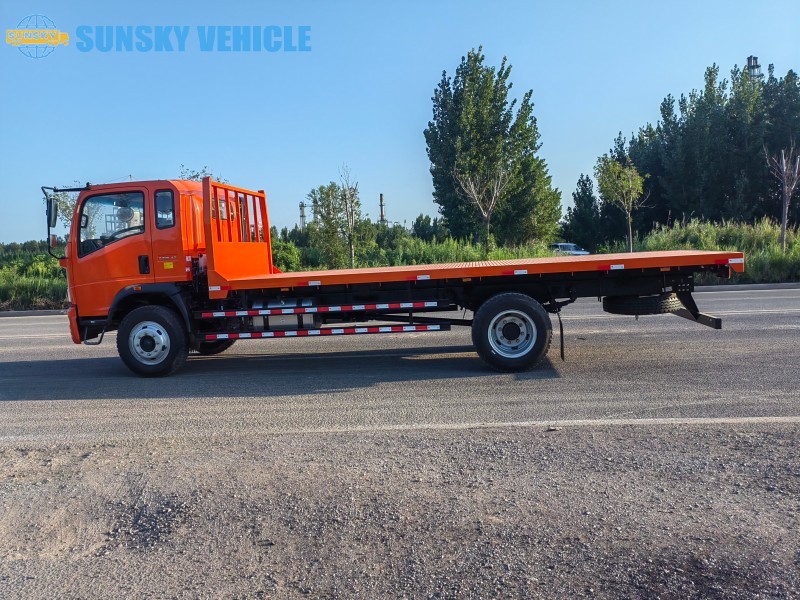
Flatbed Truck Specifications: Dimensions, Axles & Load Capacity
Many characteristics influence the suitability of a flatbed truck for a given job:
-
Deck length: common lengths range from 40 ft to 53 ft (approx. 12 m to 16 m) depending on region.
-
Deck width & height: typically up to around 8.5 ft (2.6 m) wide in many markets; deck height varies based on axle configuration.
-
Axle configuration: multi-axle setups (3-axle, 4-axle) allow heavier loads and better weight distribution; some trailers adopt “California spread” axle spacing for heavier legal weights.
-
Payload capacity: varies by country regulation and trailer build; heavy-duty flatbeds may carry 20-30 tons or more, depending on the trailer and local laws.
Understanding these specs helps fleet planners select the right flatbed for specific cargo types and route conditions.
When to Use a Flatbed Truck? Use-Case Scenarios
Flatbed trucks are used when:
-
The cargo is oversized, tall, wide or irregular and does not fit in an enclosed trailer.
-
Side or top loading by crane or forklift is needed (job sites, construction).
-
Rapid loading/unloading is critical (project-based transport, modular units).
-
Inter-site or inter-job deliveries where protective walls/roof are less important than accessibility.
For example: delivering steel girders to a construction site, transporting machinery between factories, and moving oversized piping for infrastructure projects. In each case, flatbeds offer time-saving and flexibility advantages.
Benefits & Limitations of Flatbed Truck Transport
Benefits:
-
Unmatched loading/unloading flexibility
-
Ability to handle non-standard and oversized cargo
-
Often faster turnaround at loading/unloading points
-
Versatility for many industrial, construction, infrastructure sectors
Limitations:
-
Cargo remains exposed to weather and may require tarps or covers
-
Load securing is critical (more so than enclosed trailers) to prevent shifting or falling items
-
Requires skilled loading/unloading and proper equipment on site
-
More vulnerable to theft or damage if cargo is exposed
-
In some regions heavier permitting or route restrictions apply for oversized loads
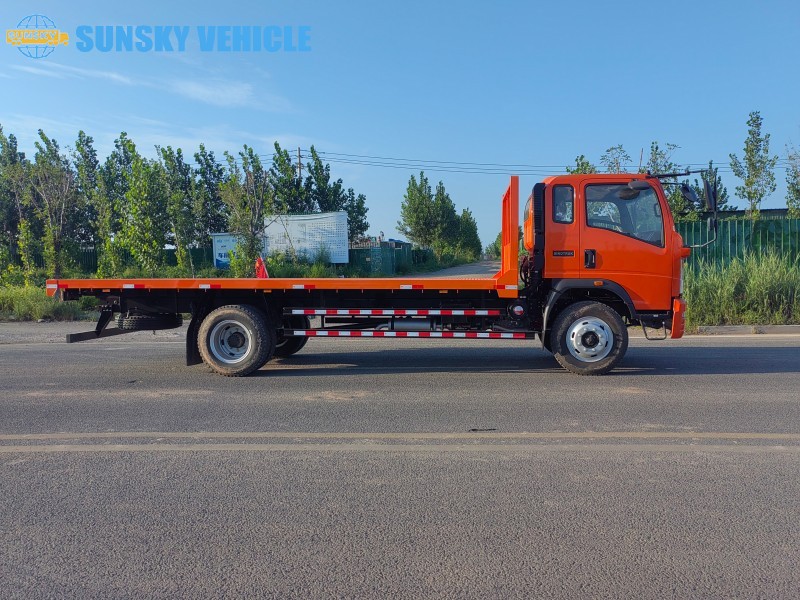
How to Choose the Right Flatbed Truck for Your Business
When selecting a flatbed truck or trailer for your operations, consider:
-
Cargo type, dimensions and weight: does it require a drop deck, extendable or standard deck?
-
Route and regulatory conditions: Are there low bridges, tunnels, or height/length restrictions? Are heavy-haul permits required?
-
Loading/unloading logistics: Does the site require crane access, side loading or top loading?
-
Fleet utilization and cost: What is the expected utilization rate? Is purchasing, leasing or outsourcing appropriate?
-
Safety and securing systems: Does the trailer include proper tie-down points, sliding winches, and tarping equipment?
-
Maintenance and resale value: Heavy industrial use demands durable build quality, strong axles and good after-sales support.
By aligning these factors, businesses ensure the flatbed truck matches operational needs and avoid unnecessary costs or delays.
Frequently Asked Questions
What is the main difference between a flatbed truck and a dry van?
A flatbed truck has an open deck with no fixed sides or roof, making it ideal for oversized, irregular or non-stackable loads. A dry van is fully enclosed, providing protection from weather and theft, but is limited in cargo shape.
Can flatbed trucks carry standard palletized loads?
Yes—flatbeds can carry palletized loads, but the cargo will be exposed and may require additional securing or tarping. For maximum protection of palletized freight, an enclosed trailer may be preferable.
Are special permits required to use a flatbed truck?
Often yes—if the load exceeds standard legal dimensions (height, length, width) or weight. Routes may require escorts or special signage depending on local regulations.
How does weather affect flatbed transport?
Because cargo is exposed, items may need tarps or shrink-wrap to protect against rain, dust or UV damage. Load securing is also more critical under adverse weather or wind.
What industries most commonly use flatbed trucks?
Construction, infrastructure, steel manufacturing, agriculture (for oversized loads), machinery transport and modular building delivery are top industries utilizing flatbeds.
Conclusion
Flatbed trucks provide an irreplaceable solution for transporting oversized, irregular and heavy freight that cannot fit standard enclosed trailers. Their flexibility, accessibility and job-site adaptability make them a cornerstone of industrial logistics, construction and infrastructure transport.
If your business handles oversized equipment, construction modules or irregular cargo shapes, it’s essential to select the correct flatbed configuration, utilize proper load securing systems, and ensure compliance with route and permit requirements.
Explore our range of flatbed trucks and trailers here.
Contact us for a customized transport solution tailored to your region and cargo type.
Visit our blog for related posts on trailer types, logistics optimisation and fleet management.





